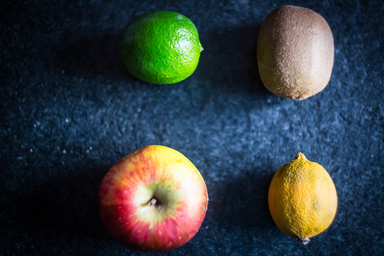“My childhood home always smelled like whatever we were cooking… I didn’t mind the smells growing up because I wasn’t aware of them. That is, until a high school friend declared my house smelled of “Chinese grossness.”– Ruth Tam, Chicago Tribune
Even though Ruth Tam’s piece explicitly addressed the shame connected to so-called “immigrant foods” in the United States, something about it stuck with 17-year-old high school me: one of only four South African Indian kids in my grade. I recalled a high school friend stepping into my kitchen for the first time and lingering before saying, “It smells like… spices.” A relatively innocuous statement; yet, I instantly felt “other” for having an odd smelling kitchen by white standards.
Point being: I’m not an immigrant, but I am a person of colour living in Cape Town – and that was enough to make me feel ostracized among the hordes of relatively privileged white people. Subtle (and not so subtle) insinuations that your culture is “strange” and “other” teaches young people of colour to be ashamed of their heritage and hyper-aware of their perceived differences at very young ages.
Skip ahead to 2018, a white-owned brewery is bottling kombucha; a white-owned bar is specializing in poke bowls; a white-owned bistro is serving “Indian tapas” and a white-owned farm is churning out canned kimchi. There was even recent uproar over a white-owned restaurant supposedly gentrifying a Gatsby sandwich. Hell, Woolworths is selling easy-to-cook Malay style curry and Thai green curry sauce while Pick n Pay is advertising “hot cross bunny chows” (it looks every bit as disturbing as it sounds). “Cultural cuisine” has become standard in Cape Town’s food scene; most of us don’t even think twice when we’re enjoying the shawarma food truck on upper campus.
While this sudden shift in the trajectory of mainstream cuisine should perhaps help me to feel unburdened of internalised shame, I’m truthfully rather bitter. Willy Staley of the New York Times best articulates my frustration with this rise of “cultural cuisine” when he explains that, regarding the gentrification of food, “the harm is not rent increases and displacement – it is something psychic, a theft of pride.”.
See, the underlying debate is the notion of cultural ownership. I can’t help but wonder why it should take a white-owned corporation and some underhanded rebranding for my culture to be accepted. Suddenly, the recipes that have been passed down through generations are being polished and plated in trendy restaurants and bars; integral elements of my culture are no longer my own – they become a profitable and mainstream fad. “Authentic” and “ethnic” are reduced to problematic buzzwords used to attract yuppie crowds.
There’s a lot that can be said here concerning race and South Africa’s history of colonialism. The reality is that the people who ridiculed this food a few years ago are the same people who have the positionality to popularise it as a trend. That’s largely because, in a post-colonial society like South Africa, whiteness gives you cultural capital. It grants you the power to decide when “ethnic” is considered inferior and when it’s considered palatable. These unexamined power structures have blurred the distinction between appreciation and exploitation.
Now, I’m not saying that it’s cultural colonialism for us to explore new foods; food brings communities together in the most unexpectedly wholesome ways. Rather, when exploring new foods, be sure to explore the cultures at their roots as well. Take note of the historic care and craft behind what you are eating. Always be mindful of the fact that these dishes are not crazes that come and go; they are central components to culture and heritage. Be conscious of whether your money is funding cultural appreciation or commercial cultural theft. And know that, if “authentic” is genuinely what you’re after, the best place to find it is in small kitchens that smell of ginger and saffron.

